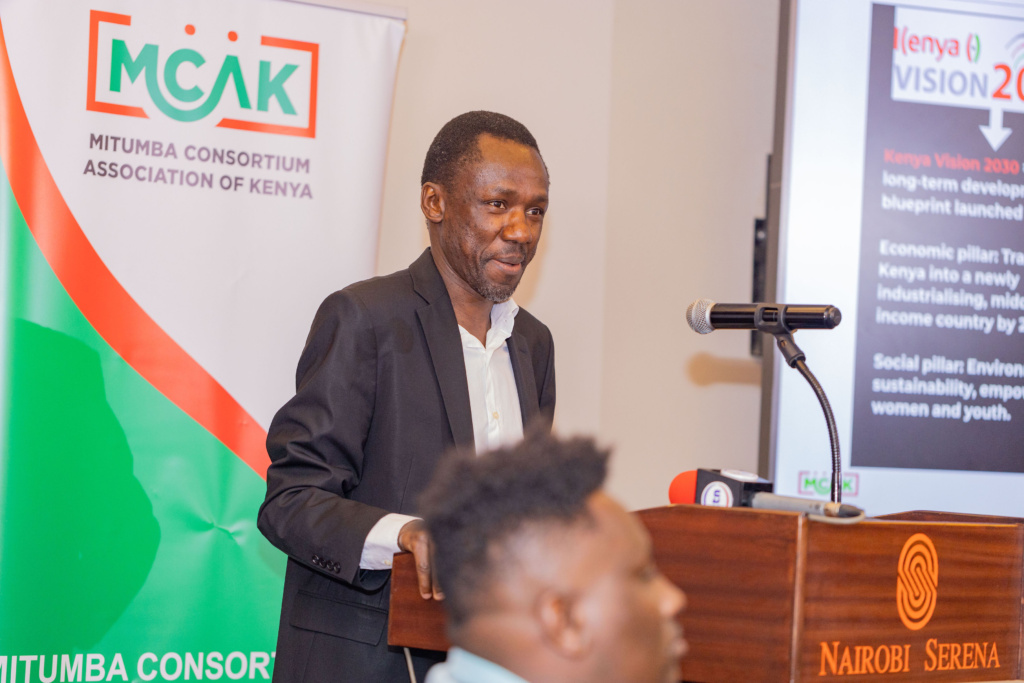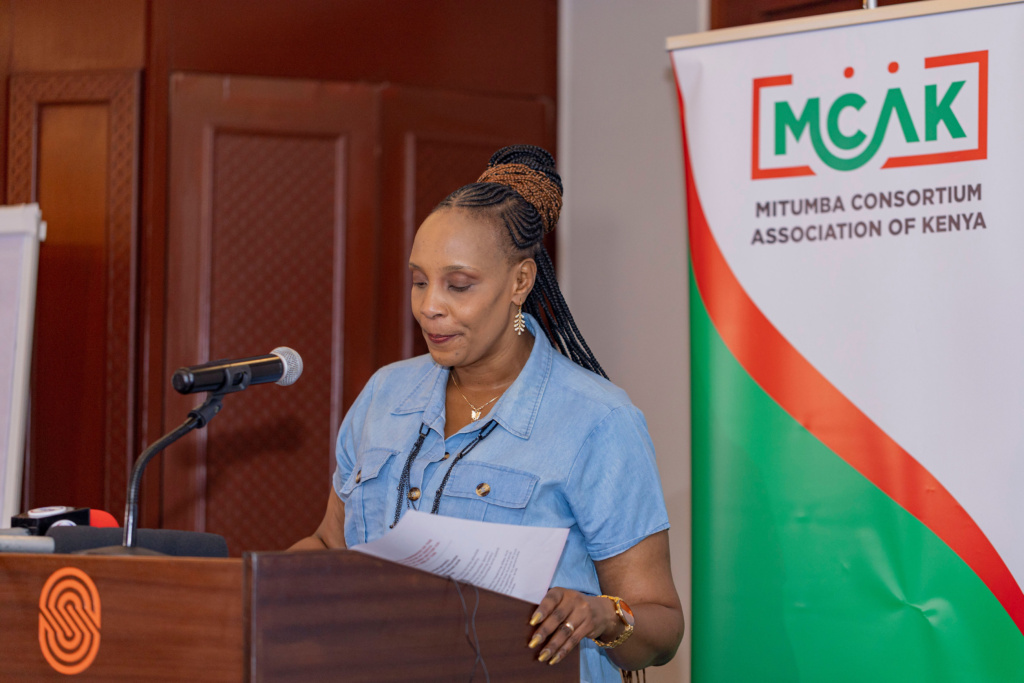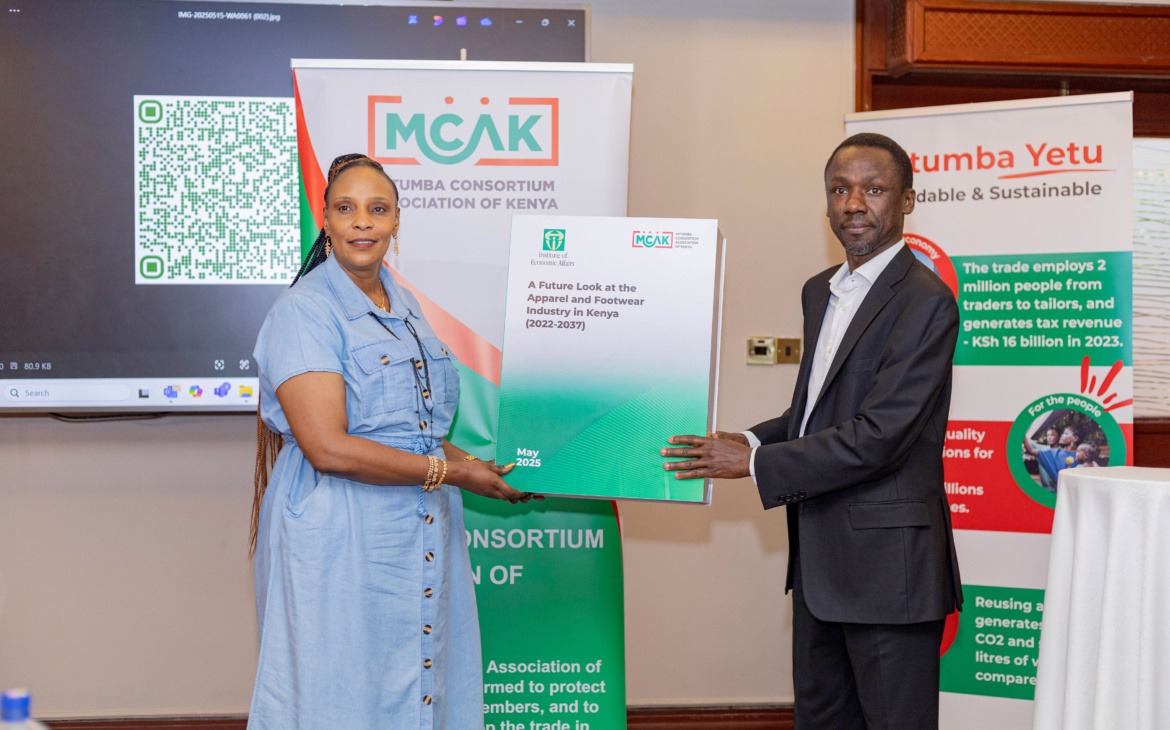The Mitumba Consortium Association of Kenya (MCAK) represents more than two million individuals ranging from traders to tailors working in both open-air and closed-market settings.
The second-hand clothing (SHC) market, popularly known as mitumba, is a thriving business in Kenya, generating billions in tax revenue each year. In 2023 alone, the sector contributed over Ksh 16 billion to the national revenue.
In an event held at Serena Hotel on Thursday, MCAK, in collaboration with stakeholders, state and non-state actors, launched a new report titled “A Future Look at the Apparel and Footwear Industry in Kenya.”
The report, developed in partnership with the Institute of Economic Affairs (IEA), provides a forward-looking analysis of Kenya’s apparel and footwear sectors over the next 15 years.
It reveals that despite facing criticism for its environmental implications and alleged impact on local manufacturing, the mitumba industry continues to flourish, indicating a dynamic market with consistent supply and demand.
According to Kwame Owino of the IEA, the mitumba sector began to gain firm footing in Kenya between the 1970s and 1990s, a period during which the country’s once-thriving textile factories, such as Rivertex, gradually ceased operations.
Notably, by 2022, Kenyan imports of second-hand clothes had reached more than 177,000 tonnes of second-hand clothing, evidence of the vast scale of the industry. In addition to creating jobs for over two million people, mitumba trading fuels a network of ancillary services such as logistics and tailoring.

The IEA analysis outlines the journey of mitumba clothing from donation points in the Global North, often through charity organizations, to sorting centers, primarily located in the Global North and the Middle East. The clothes are then exported and distributed to countries in the Global South, including Kenya, where they are sold through wholesale and retail channels.
However, beyond its economic contribution, mitumba plays a crucial social role by making affordable clothing accessible to over 24 million Kenyans.
MCAK Chairlady Teresia Njenga emphasized this point, noting that in many rural areas where people once wore tattered clothes, it is now common to find them decently dressed thanks to second-hand clothing.
She highlighted the industry’s impact on vulnerable groups, especially women, youth, students, and the unemployed, stressing that mitumba has restored dignity and hope to countless households.
She called on the government and development partners to support and empower the sector even more, considering its far-reaching economic and social benefits.

The newly launched report challenges the perception that mitumba stifles local manufacturing. Instead, it finds that second-hand clothing complements rather than substitutes for locally produced apparel.
It observes a trend where individuals tend to purchase more new clothing as their incomes increase, indicating that both markets can coexist harmoniously and cater to different segments of the population.
However, the sector is not without its challenges, as voted by William, a trader who operates in Gikomba. He said that they face constant pressure from county council officers over taxation issues. He urged for better, streamlined ways of paying through the county and being supported for efficient operations.
The report further reveals the high level of risk traders face, often paying up to USD 15,000 for a container without knowing the quality of goods inside. This financial uncertainty, coupled with rising customs duties, has led to calls from industry players for more considerate tax policies that acknowledge both the risks and the vital contributions of the mitumba sector to the national economy.
As the conversation on the future of Kenya’s clothing industry continues, the report advocates for policies that encourage coexistence between mitumba and local textile manufacturing.
Rather than framing one as a threat to the other, it suggests viewing them as parallel forces with the potential to drive inclusive economic growth, if given the right support.



